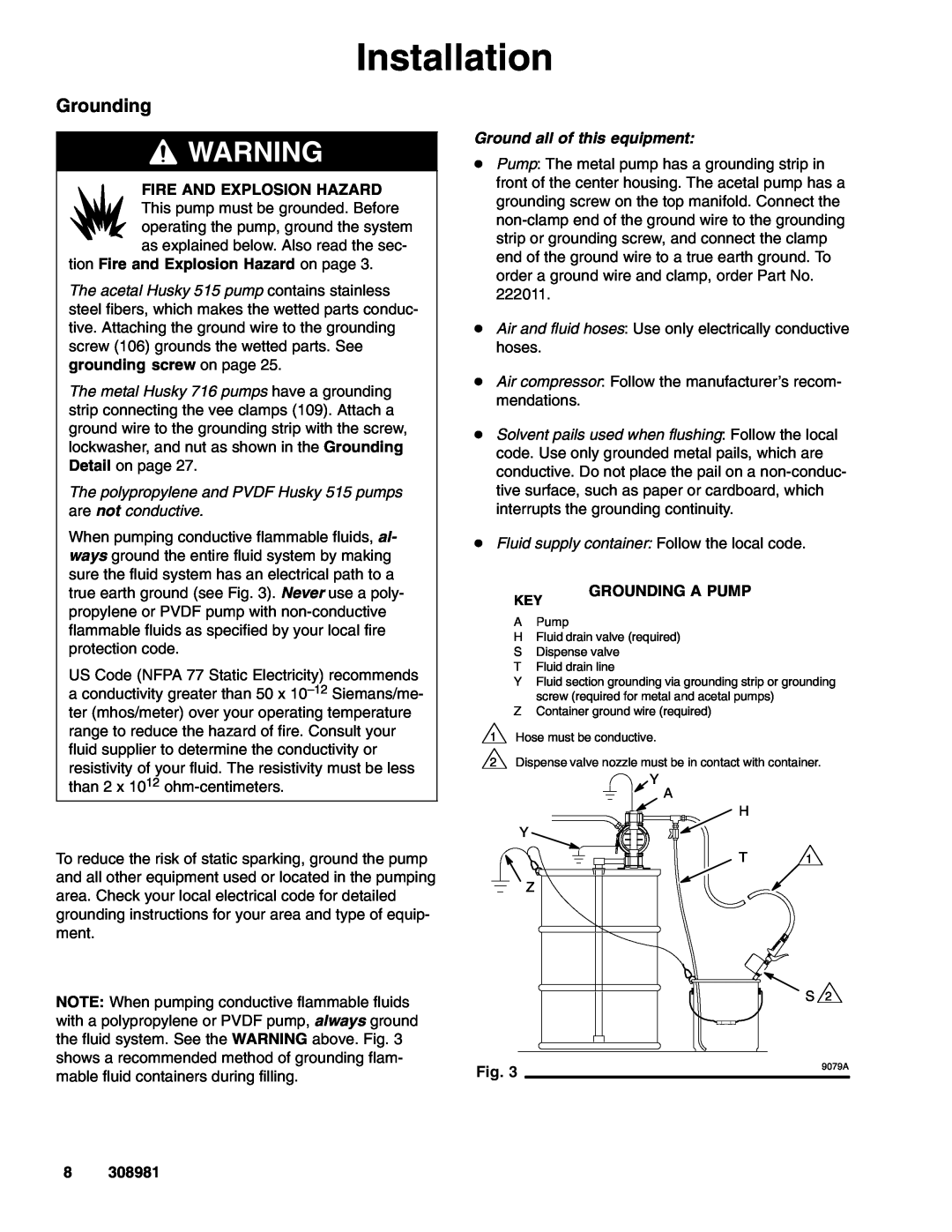
Installation
Grounding
WARNING
FIRE AND EXPLOSION HAZARD This pump must be grounded. Before operating the pump, ground the system as explained below. Also read the sec-
tion Fire and Explosion Hazard on page 3.
The acetal Husky 515 pump contains stainless steel fibers, which makes the wetted parts conduc- tive. Attaching the ground wire to the grounding screw (106) grounds the wetted parts. See grounding screw on page 25.
The metal Husky 716 pumps have a grounding strip connecting the vee clamps (109). Attach a ground wire to the grounding strip with the screw, lockwasher, and nut as shown in the Grounding Detail on page 27.
The polypropylene and PVDF Husky 515 pumps are not conductive.
When pumping conductive flammable fluids, al- ways ground the entire fluid system by making sure the fluid system has an electrical path to a
Ground all of this equipment:
DPump: The metal pump has a grounding strip in front of the center housing. The acetal pump has a grounding screw on the top manifold. Connect the
DAir and fluid hoses: Use only electrically conductive hoses.
DAir compressor: Follow the manufacturer’s recom- mendations.
DSolvent pails used when flushing: Follow the local code. Use only grounded metal pails, which are conductive. Do not place the pail on a
DFluid supply container: Follow the local code.
true earth ground (see Fig. 3). Never use a poly- propylene or PVDF pump with
KEY
GROUNDING A PUMP
flammable fluids as specified by your local fire protection code.
US Code (NFPA 77 Static Electricity) recommends a conductivity greater than 50 x
To reduce the risk of static sparking, ground the pump and all other equipment used or located in the pumping area. Check your local electrical code for detailed grounding instructions for your area and type of equip- ment.
NOTE: When pumping conductive flammable fluids with a polypropylene or PVDF pump, always ground the fluid system. See the WARNING above. Fig. 3 shows a recommended method of grounding flam- mable fluid containers during filling.
A Pump
HFluid drain valve (required) S Dispense valve
T Fluid drain line
Y Fluid section grounding via grounding strip or grounding screw (required for metal and acetal pumps)
Z Container ground wire (required)
1Hose must be conductive.
2Dispense valve nozzle must be in contact with container.
Y
A
H
Y ![]()
T 1
Z
S 2
| 9079A | |
Fig. 3 | ||
| ||
|
|
8 308981
